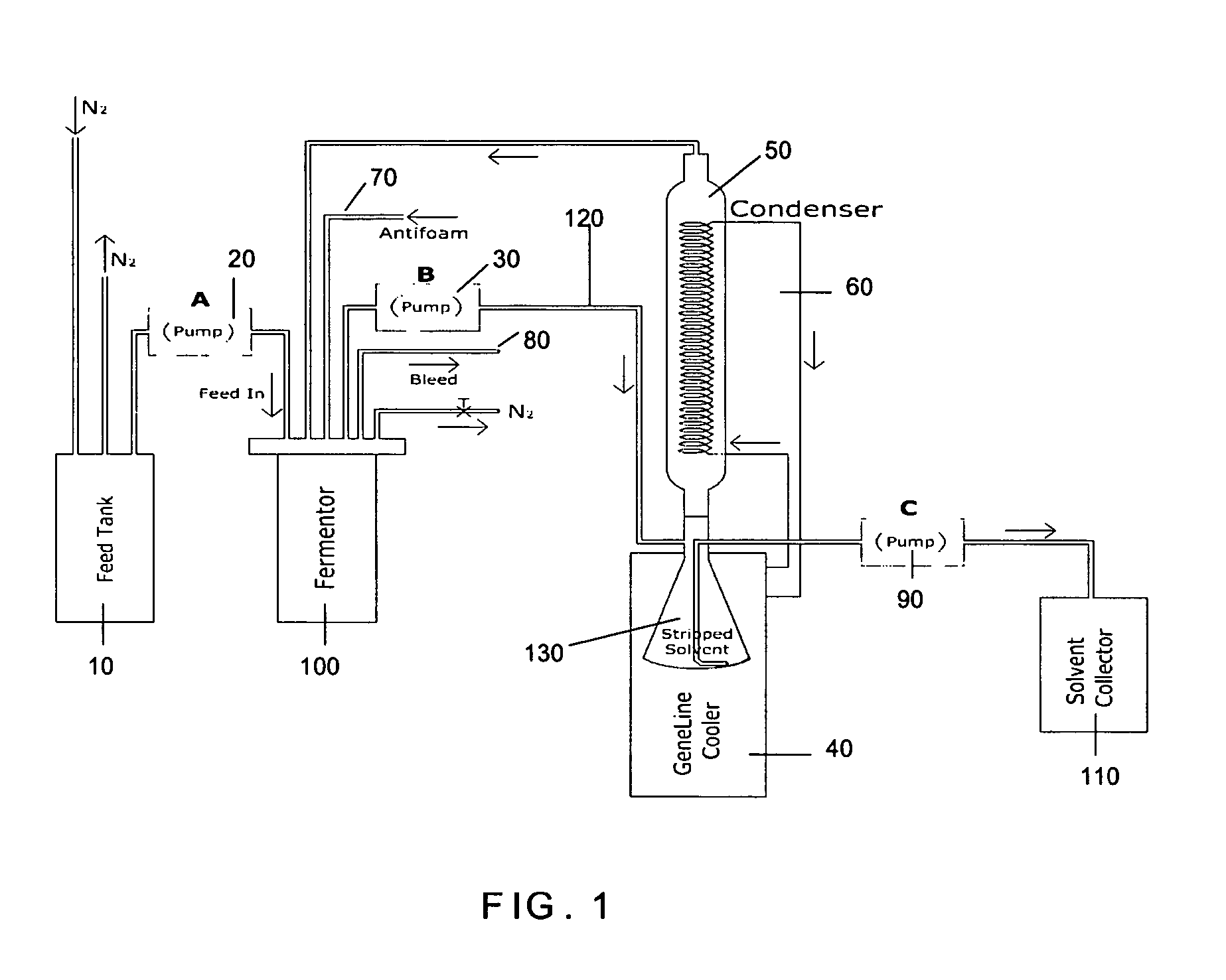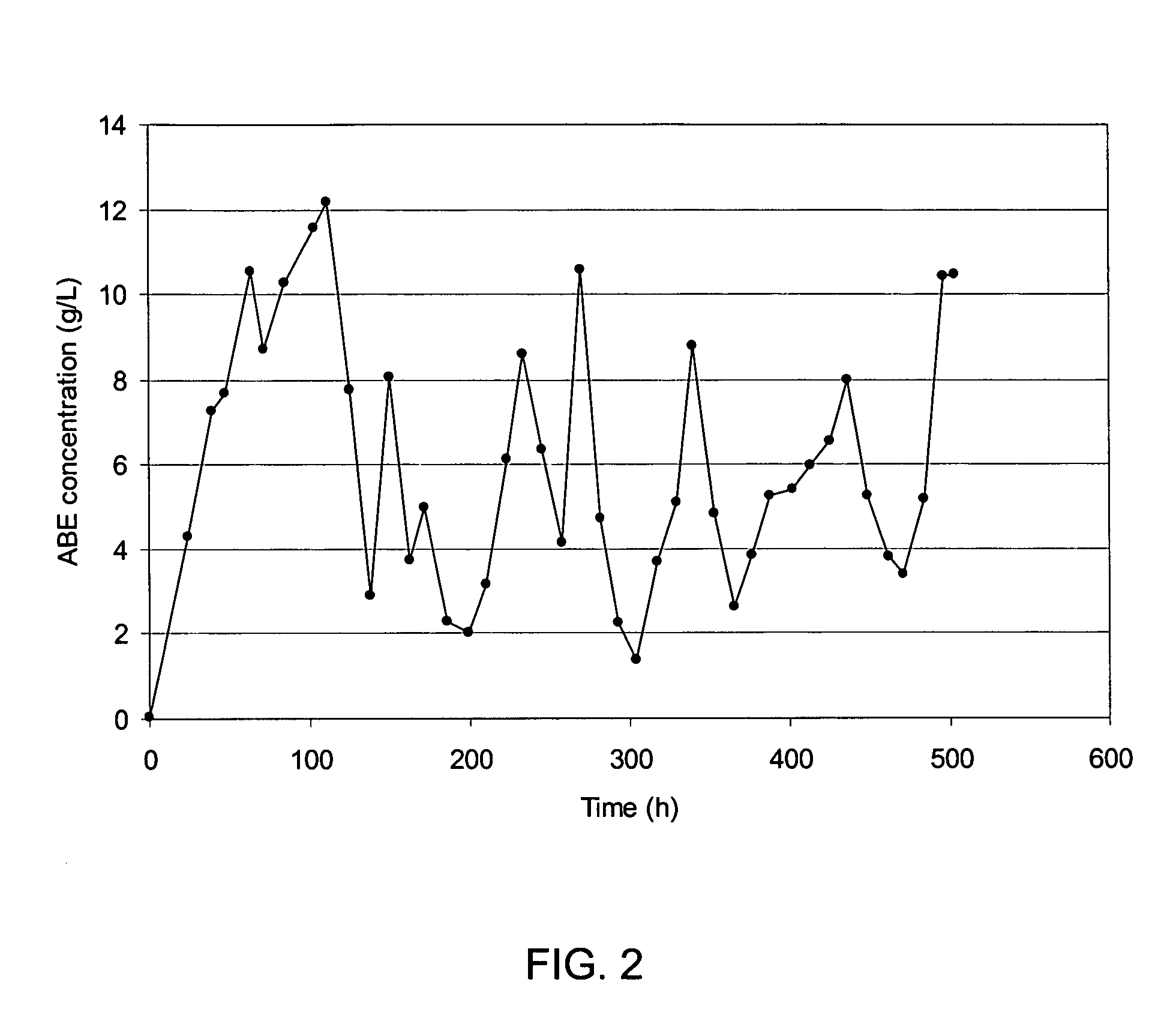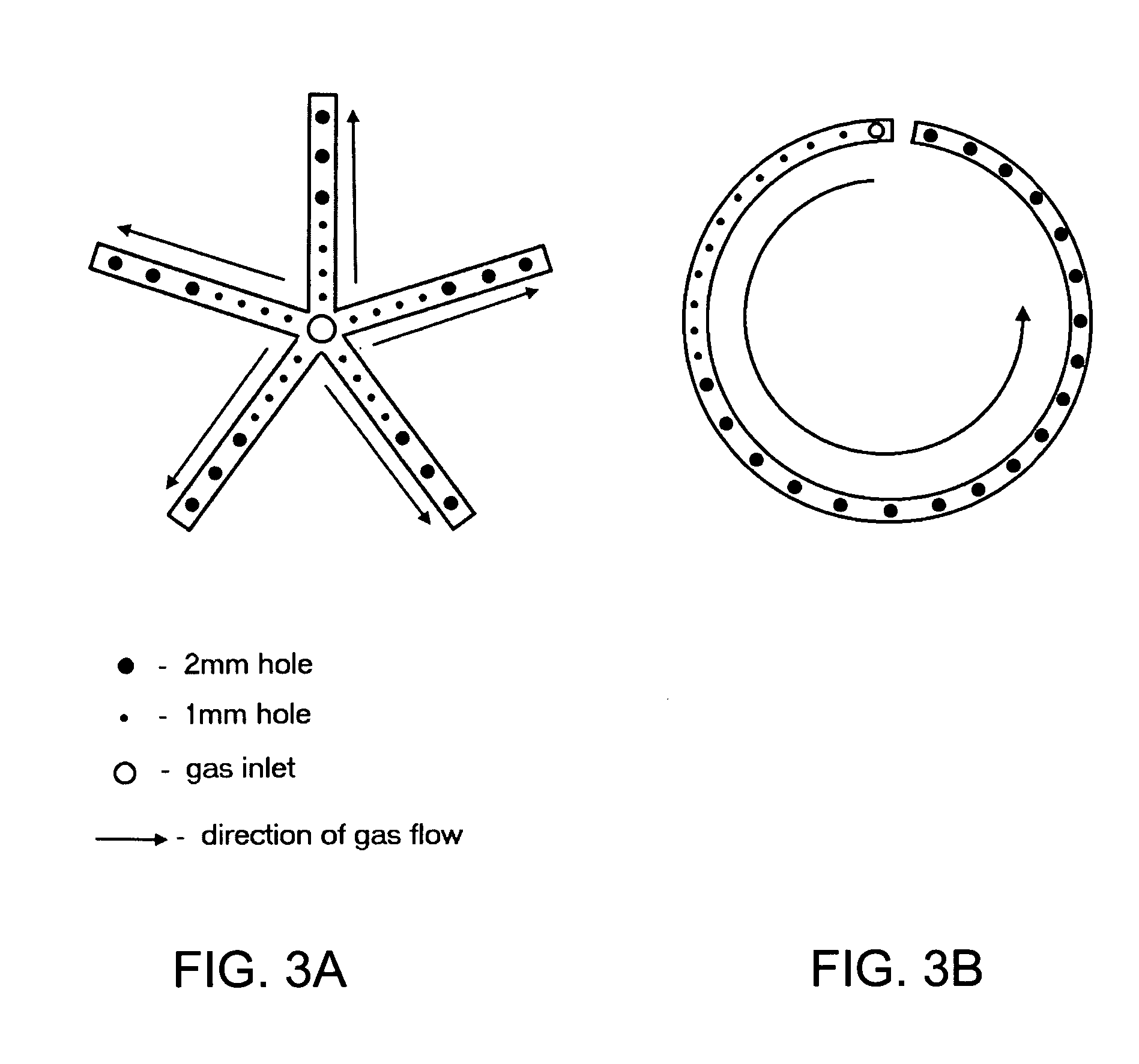Process for continuous solvent production
a technology of continuous solvent and process, which is applied in the field of continuous solvent production, can solve the problems of petroleum-derived butanol not being desirable for food applications, butanol toxicity to the culture, and many investigators' studies, and achieves the effect of high solvent and low-acid producing strain
- Summary
- Abstract
- Description
- Claims
- Application Information
AI Technical Summary
Benefits of technology
Problems solved by technology
Method used
Image
Examples
Embodiment Construction
[0016] The invention may be further understood by the following non-limiting examples.
[0017] The present invention controls the concentration of solventogenic microorganisms (cell concentration) and carbohydrate concentration while removing solvents with gas stripping to achieve a continuous solvent production process using solventogenic microoganisms. The process described herein results in high glucose utilization and a high butanol selectivity as compared to current processes. In particular embodiments, the present invention provides butanol selectivities greater than about 4, greater than about 6 and from 6-11. The process described herein can be an integrated process, where the gas stripping is performed in the same vessel as the solvent production, or the gas stripping can be carried out in a separate vessel connected to the solvent production vessel by the appropriate conduits and connections, as known in the art.
[0018] Gas stripping allows for selective removal of volatile...
PUM
 Login to View More
Login to View More Abstract
Description
Claims
Application Information
 Login to View More
Login to View More - R&D
- Intellectual Property
- Life Sciences
- Materials
- Tech Scout
- Unparalleled Data Quality
- Higher Quality Content
- 60% Fewer Hallucinations
Browse by: Latest US Patents, China's latest patents, Technical Efficacy Thesaurus, Application Domain, Technology Topic, Popular Technical Reports.
© 2025 PatSnap. All rights reserved.Legal|Privacy policy|Modern Slavery Act Transparency Statement|Sitemap|About US| Contact US: help@patsnap.com



